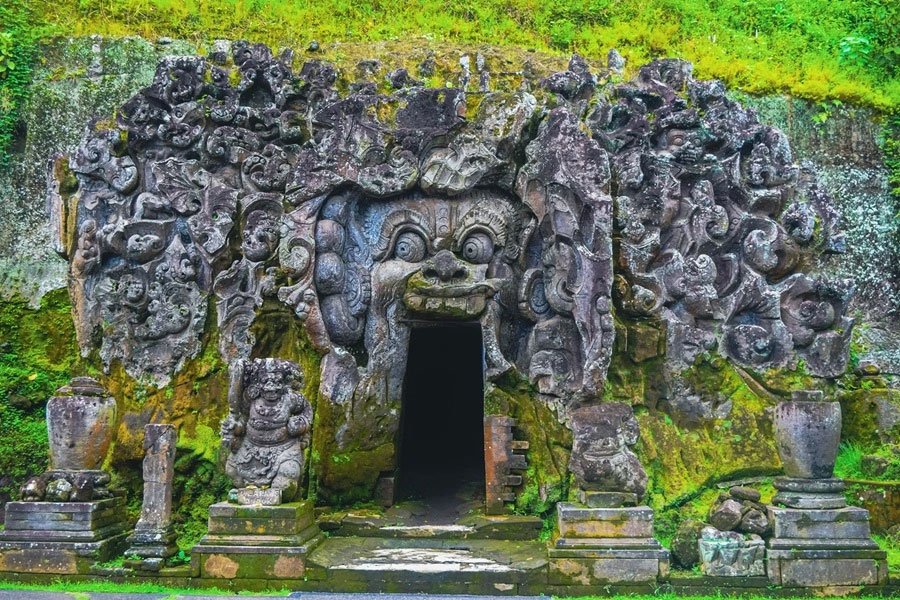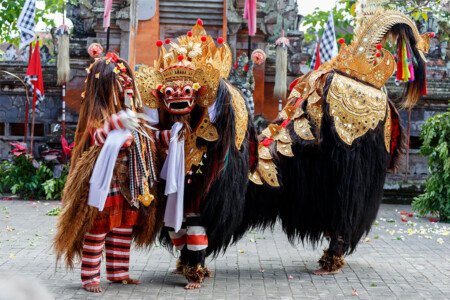Bali is a treasure trove of culture, nature, and spirituality. Among its many wonders, the ancient rock temples stand as silent guardians of Bali’s rich history and mystical traditions. These temples, carved into cliffs and nestled within caves, offer a fascinating glimpse into the island’s past and its deep connection with Hinduism, art, and architecture.
In this article, we will embark on a captivating journey to explore Bali’s ancient rock temples, uncover their history, architectural marvels, spiritual significance, and the unique experiences they offer visitors today. Whether you’re a history buff, a spiritual seeker, or simply an adventurous traveler, Bali’s rock temples promise an unforgettable experience.
🌄 The Cultural and Historical Backdrop of Bali
Bali’s unique culture stems from a rich blend of indigenous traditions and Hindu influences brought from India around the 1st century AD. Unlike most of Indonesia, which is predominantly Muslim, Bali remains largely Hindu, which deeply shapes its religious practices and temple culture.
The ancient rock temples are an essential part of this spiritual landscape. Carved out of volcanic stone or integrated into natural rock formations, these temples are not only places of worship but also monuments reflecting Bali’s artistic mastery and religious devotion through centuries.
🪨 What Are Rock Temples?
Rock temples in Bali are temples constructed either inside natural caves, carved directly from cliffs, or built alongside rugged rock faces. These sites often harness the natural landscape, blending architecture with nature in a way that exemplifies harmony and respect for the earth — a core principle in Balinese Hinduism.
These temples typically serve as meditation spots, pilgrimage destinations, or ceremonial sites. Their age can vary from a few centuries to over a thousand years, and many contain intricate carvings and statues depicting deities, mythological scenes, and sacred symbols.
🏞️ Iconic Ancient Rock Temples to Visit in Bali
1. Goa Gajah (Elephant Cave)
One of Bali’s most famous ancient rock temples, Goa Gajah, dates back to the 9th century. Located near Ubud, this temple was originally created as a sanctuary for meditation and spiritual rituals.
The temple’s entrance is carved into a menacing demon face, with its mouth serving as the gateway inside. Beyond the entrance, visitors find a peaceful cave with Hindu and Buddhist statues and a bathing pool surrounded by fountains.
- Spiritual Significance: Goa Gajah symbolizes protection from evil spirits and is a sacred place for both Hindu and Buddhist practices.
- Architecture: The fusion of Buddhist and Hindu iconography reflects the island’s religious diversity during its early development.
2. Gunung Kawi Temple
Situated near Tampaksiring, Gunung Kawi is one of Bali’s oldest rock-cut temples. Dating back to the 11th century, this complex is famous for its 10 rock-cut shrines or candi, carved into the cliff face overlooking the Pakerisan River valley.
- Mystical Atmosphere: The serene setting amid lush rice terraces adds to the spiritual ambiance.
- Historical Importance: It is believed to honor the Balinese kings and queens, making it a royal funerary temple.
Visitors must descend numerous steps to reach the temple, passing through scenic paths dotted with small shrines and statues.
3. Pura Lempuyang Luhur
Known as the “Gateway to Heaven,” Pura Lempuyang Luhur is perched high on Mount Lempuyang and is one of Bali’s oldest and most revered temples. Though not entirely carved from rock, parts of it are integrated into the volcanic mountain.
- Spiritual Journey: Pilgrims often climb hundreds of steps to reach the temple, seeking blessings and spiritual purification.
- Breathtaking Views: The temple offers panoramic views of Mount Agung, Bali’s highest volcano.
The temple complex includes multiple shrines, each with its own significance in the Balinese Hindu cosmology.
4. Goa Lawah (Bat Cave Temple)
Goa Lawah is a unique temple built around a natural cave inhabited by thousands of bats. Located in eastern Bali, this temple holds great spiritual importance as a site believed to protect the island from evil spirits.
- Nature and Spirituality: The presence of bats symbolizes fertility and protection in Balinese belief.
- Ceremonial Importance: Goa Lawah plays a key role during the Nyepi (Balinese New Year) rituals, marking the start of island-wide spiritual cleansing.
Visitors experience an eerie yet fascinating blend of nature and temple spirituality here.
🧘 Spiritual Significance of Rock Temples
Bali’s rock temples are more than historical sites; they remain active places of worship and spiritual practice. The Balinese Hindu belief system centers on maintaining harmony between humans, nature, and the spiritual world. These temples, deeply embedded in the natural landscape, embody this principle.
Meditation, prayer, and ritual offerings are common daily practices at these temples. The caves and cliff faces, often considered sacred dwellings for gods and ancestral spirits, provide a powerful atmosphere for spiritual reflection.
🎨 Artistic and Architectural Marvels
Balinese rock temples showcase extraordinary craftsmanship. The detailed carvings often feature gods and goddesses from the Hindu pantheon, mythological creatures, floral motifs, and sacred symbols like the lotus flower and the Mandala.
What’s fascinating is the seamless integration of the temples into their natural surroundings. The sculptors respected the existing rock formations, enhancing their natural beauty rather than overpowering it. This harmony between human creativity and nature highlights Bali’s deep reverence for the environment.
🏞️ Experiencing the Temples Today
Visiting Bali’s rock temples is a unique experience blending adventure, culture, and spirituality. Here are some tips and things to keep in mind:
- Respect the Sacred: Always dress modestly, wear a sarong (often provided at the temple), and follow local customs.
- Hire a Guide: To fully appreciate the history and symbolism, consider hiring a knowledgeable guide.
- Timing: Early morning visits allow you to avoid crowds and enjoy peaceful surroundings.
- Combine with Nature: Many temples are located in scenic areas ideal for hiking, photography, and meditation.
🌱 Conservation and Challenges
While these temples are invaluable cultural assets, they face challenges such as erosion, tourist pressure, and environmental degradation. Efforts by the Balinese community and local authorities aim to preserve these sacred sites through sustainable tourism practices and restoration projects.
Supporting local initiatives and respecting temple rules help ensure that these ancient rock temples remain intact for future generations.
✨ Conclusion: A Timeless Journey into Bali’s Soul
Exploring Bali’s ancient rock temples is not just a sightseeing activity; it is a deep dive into the island’s soul. These majestic temples stand as testaments to Bali’s spiritual devotion, artistic genius, and harmonious relationship with nature.
Whether you find inspiration in their mystical aura, marvel at their intricate carvings, or simply enjoy the serene landscapes, Bali’s rock temples promise a transformative experience that connects you with ancient wisdom and living traditions.
Plan your visit, immerse yourself in the spiritual ambiance, and let the rock temples of Bali reveal their timeless stories to you.










Join The Discussion